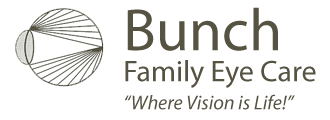Back-To-School: Why Eye Exams Are More Important Than Ever
Since the onset of COVID-19, many children have been learning remotely through distance learning programs. While parents are concerned about their children falling behind academically, eye doctors are concerned that undiagnosed vision problems may impact the child’s school performance.
Undetected vision problems may hinder a child’s ability to learn. That’s why eye doctors strongly recommend that children undergo a thorough eye exam before the new school year begins.
While it’s tempting to rely on vision screenings provided by schools, these superficial visual acuity tests can identify only a limited number of eyesight problems. Only a comprehensive eye exam conducted by an eye doctor can accurately diagnose and address a wide range of problems related to vision and eye health.
At we only take appointments for children aged 5 years old and up.
Why Are Eye Exams Important?
Up to 80% of children’s learning is visual, so even the slightest vision problem can have a negative impact on their academic achievement. Taking a child in for an eye exam once a year will allow your eye doctor to detect and correct refractive errors like myopia (nearsightedness), hyperopia (farsightedness) and astigmatism, and check their visual skills, such as convergence insufficiency, binocular vision, focusing and more.
Comprehensive eye exams are the best way to detect mild and serious eye health conditions. Routine eye exams are especially important for children with a family history of eye health problems.
How Is Vision Affected By Online Learning?
The number of time children spends looking at digital screens was already a concern in the pre-pandemic era—but the COVID pandemic has only exacerbated the issue. According to the Indian Journal of Ophthalmology, children spent twice as much time on screens during COVID-related closures than they did prior to the pandemic.
For one thing, spending prolonged periods of time on digital devices forces the eyes to work harder, making children (and adults) more susceptible to digital eye strain, one of the hallmark symptoms of computer vision syndrome. People who spend 2 or more consecutive hours staring at a screen are at higher risk of developing this condition.
Some computer vision syndrome symptoms include:
- Blurred vision
- Dry eyes
- Eye fatigue
- Eye pain
- Headaches
- Neck and shoulder pain
These symptoms can be caused by a combination of the following factors:
- Glare and reflections from the screen
- Excessive time looking at a screen
- Poor lighting
- Poor posture
- Screen brightness
- Undetected vision problems
In addition to digital eye strain, several studies have found that children who spend many hours indoors doing “near work” — writing, reading, and looking at computers and other digital devices — have a higher rate of myopia progression.
A study published in the American Academy of Ophthalmology’s professional journal, Ophthalmology, found that first-graders who spent at least 11 hours per week playing outside in the sunshine experienced slower myopia progression. Some researchers think that exposure to sunlight and looking at distant objects while playing outdoors might help decrease myopia progression.
While regular eye exams are essential for every member of the family, they’re especially important for those who spend a good portion of their day in front of a screen.
Don’t put off your child’s annual eye exam. Schedule an appointment with Pearson Eyecare Arrowhead in Glendale today!
Q&A
1. At what age should a child have an eye exam?
According to the American Optometric Association, it’s recommended that before a child starts school, they should undergo an eye exam, and every one to two years after that, based on their eye doctor’s recommendation.
2. Does my child need an eye exam if they passed the school vision screening?
Yes! School vision screenings are superficial eye evaluations designed to diagnose a limited number of vision problems like myopia. They do not check for visual skills and other problems that may hinder your child’s academic success.
Your eye doctor will evaluate your child’s vision and eye health, along with visual abilities, including depth perception and eye-tracking, to let you know whether your child’s eyes are “school-ready.”

